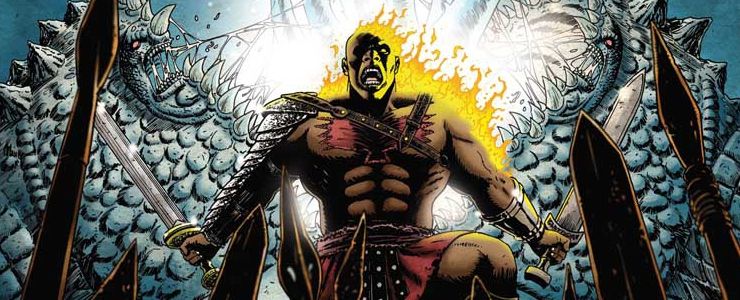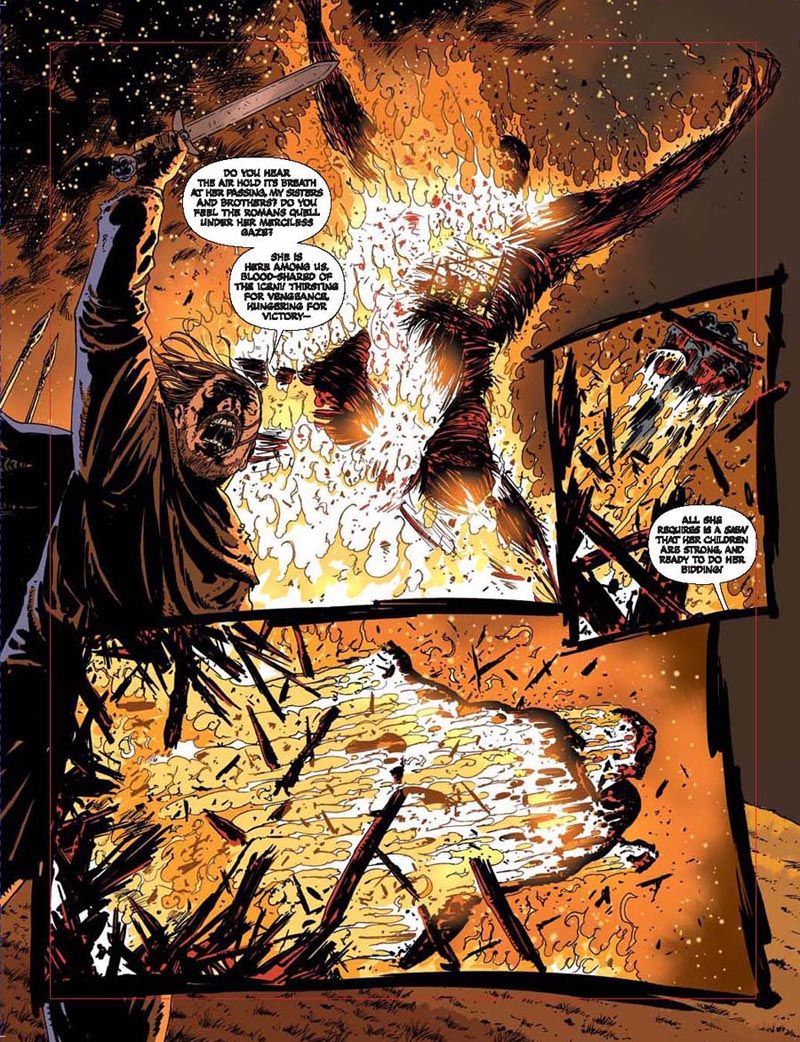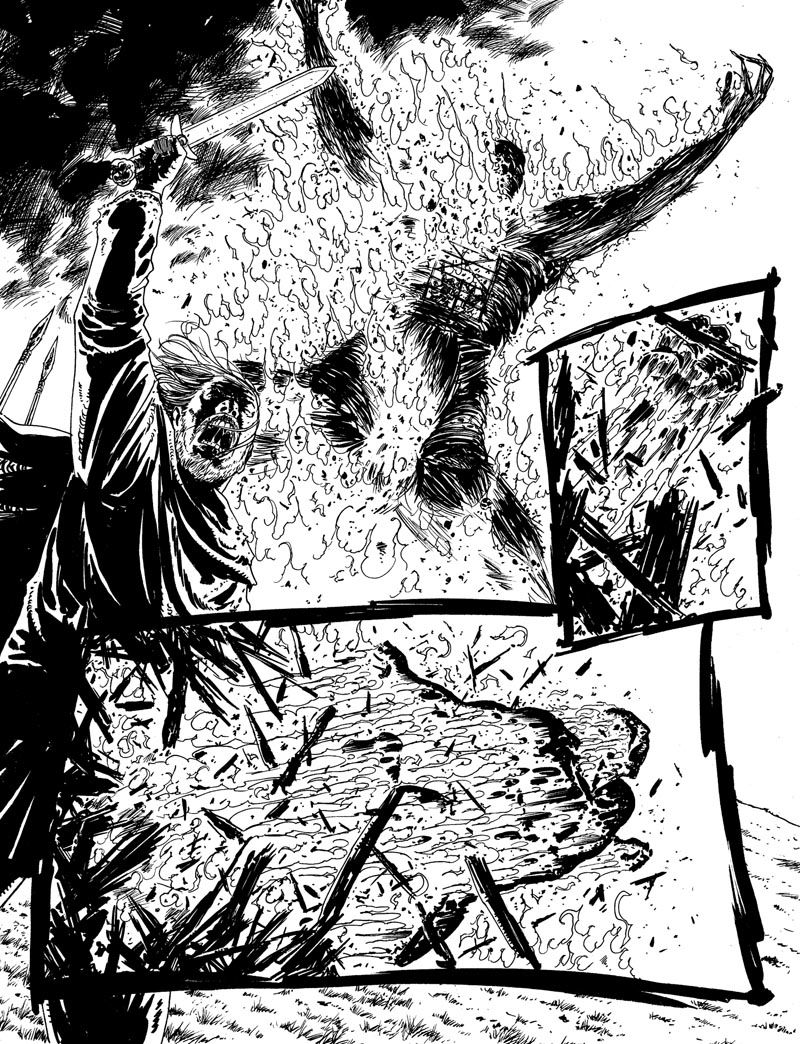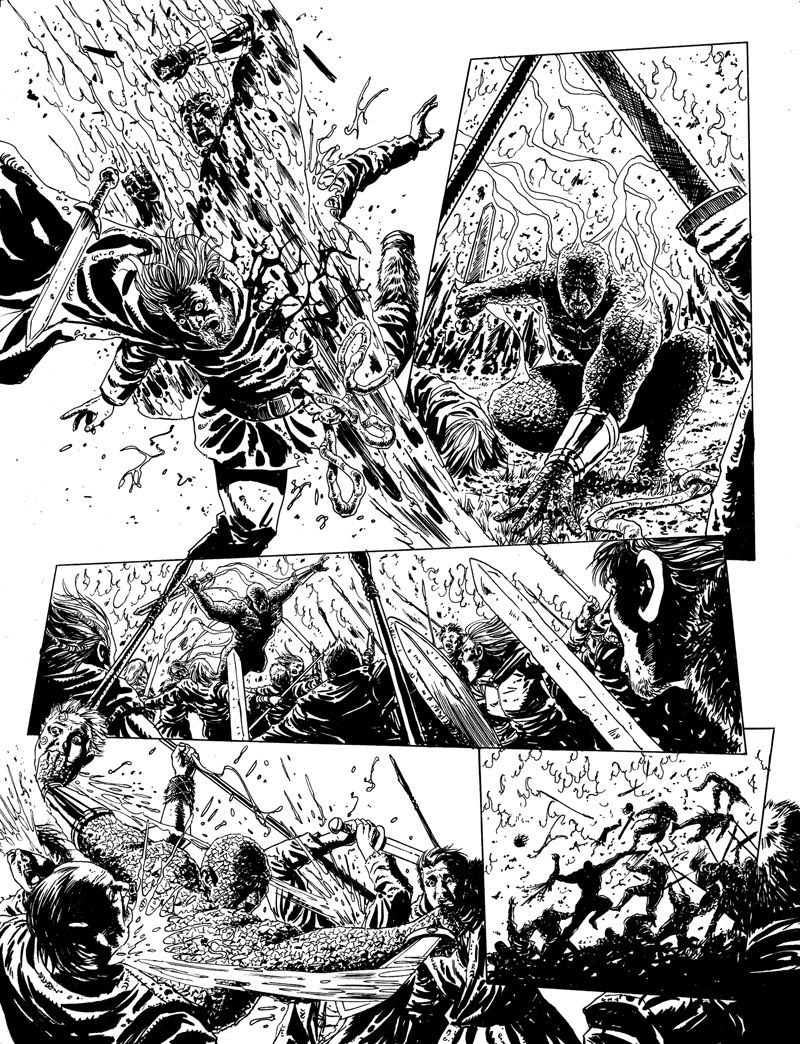In March 1979, 2000AD's then-publisher IPC launched a sister title to the science fiction comic whose success so baffled them. Tornado was a traditional British-style boy's adventure anthology, weekly, printed on the same low-grade newsprint as 2000AD, and featured a mix of genre strips. Easily the best feature in Tornado was Blackhawk, written by the great Gerry Finlay-Day, later to co-create Rogue Trooper with Dave Gibbons. Just as Finlay-Day's earlier strip Rat Pack in Battle Picture Weekly was heavily inspired by the storytelling engine of The Dirty Dozen, and so was Blackhawk. A Nubian slave leading a Spartacus-like rebellion is noted for his bravery by the Roman military, commissioned as a centurion, and forced to lead a rag-tag unit of other former slaves and gladiators in a series of suicide missions. Tornado was canceled after just a few months, and folded into the more successful 2000AD, as was always the way back then. Blackhawk was one of only two strips that made the jump (well, three if you count Kev O'Neill's occasional Captain Klep one-page gags, his first satire of the superhero genre, eight years before Marshall Law).
To fit with the sci-fi ethos of 2000AD, Blackhawk had a radical change of direction, with the character abducted by aliens and forced to fight in intergalactic, and interspecies, gladiatorial combat. One noteworthy occurance was the strip was one of the first 2000AD strips to have U.S. talent working on it, with Joe Staton drawing an episode. The series ended in early 1980, and was never revived, bar Joe Staton's second gig drawing the character, in 1982's 2000AD Sci-Fi Special.
Until now. Sort of. The series has been reinvented, reminiscent of the job Ronald D. Moore did on Battlestar Galactica -- it's been stripped of all corn and cheese, roughed up, and sexed up. It now has its fantasy elements built in, rather than bolted on at a halfway stage. The strip-down and total rebuild has included a new name, Aquila. It's one of the best new character launches for 2000AD in recent years, and we spoke to its creators, writer Gordon Rennie and artist Leigh Gallagher about the strip's birth, and its future.
Robot 6: What was the original pitch for the series? Was the Blackhawk inspiration an editorial idea, or yours? Were you a fan of the strip?
Gordon: The idea was always mine -- I wanted to do a semi-fantasy strip set against the historical reality of the Roman Empire, and I wanted it to be fairly grim and dark. I had always liked the old Blackhawk strip -- its appearance in the prog coincided with my teenage D&D phase -- but didn't want to continue the outright fantasy/sword & sorcery vibe it had. The idea of a soulless gladiator searching for the demon who took his soul comes from Blackhawk, but, other than that, they're really two very different strips.
Leigh, you're far too young to remember the original Blackhawk surely? Or is there a grotesquely ageing portrait hidden in your attic?
Leigh: Hey, I'm nearly 35 (I use Oil of Olay every morning), so no, I'm not too young, though I just missed seeing this on the shelves. I was too busy reading M.A.S.K. and Transformers around that time. But I got the latest collection last year out of curiosity when I found out about the Aquila gig, and loved it! Even when he got abducted by aliens! Part of me wishes we'll one day take Aquila there, but I know that will NEVER happen.
Roman history is having something of a “moment” in pop culture these days. Have you been enjoying TV shows such as Rome or Spartacus, or the movies Centurion and The Eagle, or the novels of Conn Iggulden or Simon Scarrow?
Leigh: Oh, yeah, I've watched the entire run of Spartacus and it's great stuff! Each episode has exactly the right balance of minimal story progression, gratuitous sex, and violence! As for the rest, I've a box set of Rome, but just scanned through it to get the reference I need. The thing is, Gordon's the Roman nut. Me, I'm the first to admit I've never been the intellectual learned type. It takes me long enough to draw this, that it feels a lot like school homework when I have to research this stuff. And I bet you just made up those novelist names ... especially that first one ...
Gordon: I've read or seen all the above mentioned, to various degrees of liking. The first few Scarrow books are great; the Iggulden stuff is pretty awful, though. At the less populist end of the market, I'd also recommend Steven Saylor's Roma Sub Rosa books, about the adventures of Gordianus the Finder, who's essentially a Roman private detective, and Robert Harris's novels Imperium and Lustrum, about the life of Cicero and the fall of the Roman Republic. Of course, these books are very much set within the solid historical reality of Roman history, something that Aquila is not.
So Leigh, how's married life treating you? (Leigh's marriage proposal was conducted through the very public medium of posting a strip on his blog back in November 2010)
Leigh: Cheers, matey, but ask me again in another month as we ain't married yet! Soon, though, and I'll post on my blog the special invites I drew up that should be a nice bookend for those who liked the proposal! And we'll see if that post will also clock over 125,000 hits.
When I first saw your work, Leigh (on 2000AD's Defoe), I thought, oh, Matt's hooked up Pat Mills with some guy who obviously loved the work of Bryan Talbot. Clever. Then, when you worked on Judge Dredd, I thought I spotted a growing John Ridgway influence, too. What influences do you site for your work, and especially on Aquila?
Leigh: I have to be honest and admit that even though I get that comparison A LOT, I've never seen much of Bryan Talbot's past work to be influenced. As for Ridgeway, I loved his stuff in The Dead Man, but that was a fairly recent purchase for me.
It's been pretty well-documented now that my main influences stem from my love for the short-lived Scream horror anthology in the '80s. Mainly Jose Ortiz's gorgeous black-and-white work on the fantastic Thirteenth Floor series written by John Wagner and Alan Grant. I later tracked down Ortiz's past work in Creepy and Eerie and The Eagle where he'd occasionally use a lot more detailed cross-hatched style. Unfortunately for my deadlines, THAT'S the style that's been incorporated into mine.
For Aquila, I try and tone it down a bit as I'm working with a great colorist called Gary Caldwell, but I've found in later episodes I still can't help myself with all that damn crosshatching. For panel layouts, I'm definitely influenced by the incredible artist Greg Capullo. Been a fan of his for a long, long time.
So, Gordon -- the future. Have you a grand plan for the character?
Gordon: By the end of "Blood of the Iceni," there'll hopefully be enough hints dropped to show that it's all going somewhere, at least for the next few years. As a character, Aquila is now definitely and actively on the path to somewhere. I don't want it to be a History Lesson of the Week strip (aka "Look at all the stuff I just read on Wikipedia!") but there's also various historical touch points I'd like to get him to. The point of history that I've dropped him into is full of good stuff, all within a few years of each other. The Great Fire of Rome, the Year of the Four Emperors, the siege of Masada and fall of Jerusalem during the Great Jewish Revolt, the eruption of Vesuvius and destruction of Pompeii. Oh yes, Aquila will definitely be making stopovers at a few of these points.
And then there's an upcoming story called "Quo Vadis, Domine?" that's bound to annoy some people ...




